I wrote in some detail in this post about the many trials and errors of developing and making my creature’s mask, and thought you might like to hear more about some of the other elements of its costume.

I wove the strap for my overalls on an inkle loom, using threads which spoke to the warm orange palette which colours the walls of Pilar’s house in Mexico city.

I’ve spent many months experimenting with simple pick-up patterns on my inkle loom, and this seven-thread motif is one of my favourites to weave, with a lovely rhythm. And for the purposes of the creature’s costume, I knew it would work very well: because the pattern is the same on both sides, the strap would be completely reversible.
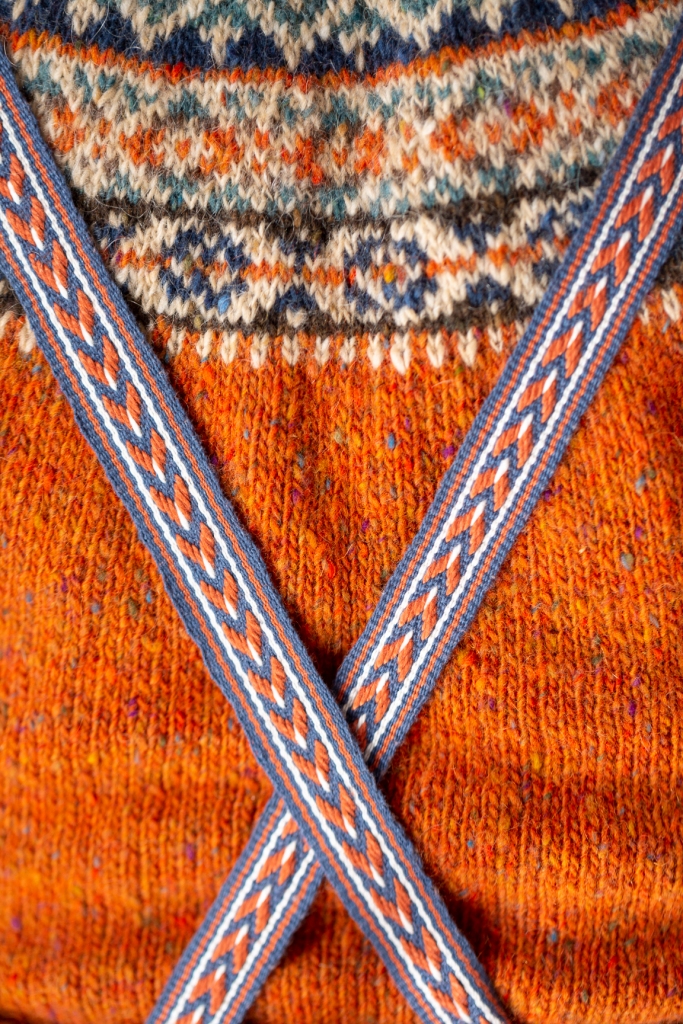
Like many simple, centred weaving patterns, if flipped about and repeated, this motif quickly resolves itself into a series of Os and Xs. If you’ve spent any time weaving bands – or indeed knitting traditional stranded colourwork – such interlocking OXO patterns will be very familiar to you.
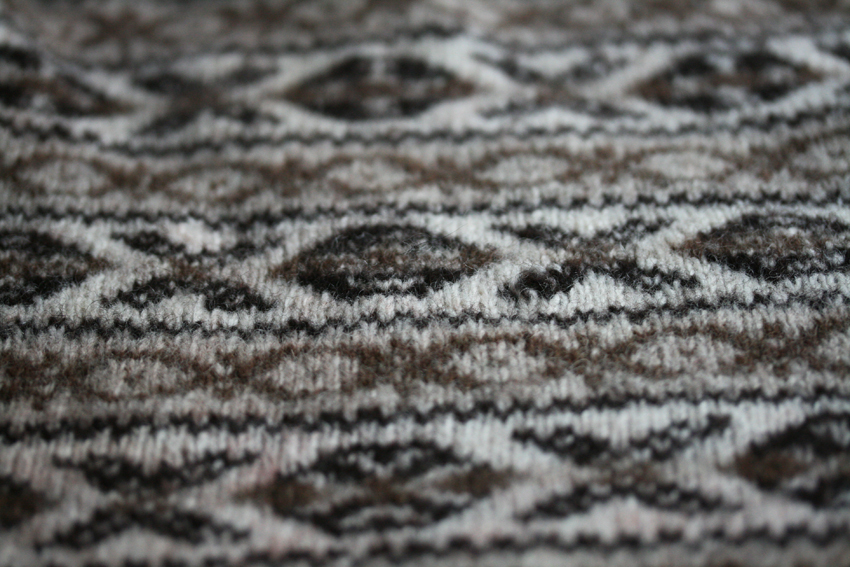
I have spent a lot of time while I’ve been weaving thinking about OXO patterns, and their commonality in textiles of many kinds, across many different eras, all around the world. Such motifs are familiar to both South American and Northern European band weaving and hand knitting traditions and they interest me both because they are abstract and non-figurative, and because they are a natural consequence of the way such textiles are structured. These are patterns weaving or knitting hands simply can’t help making.
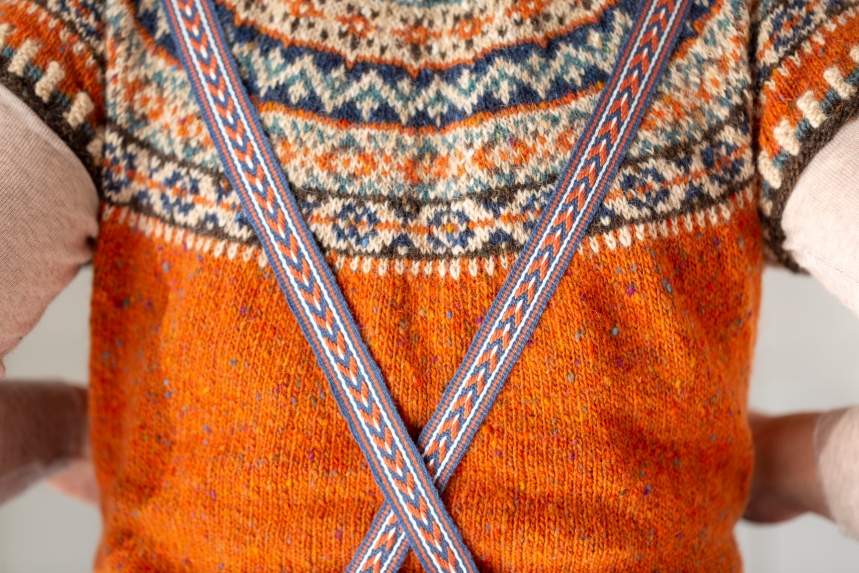
Because of where we are in the world, we might visually associate OXO patterns with Shetland knitting, or with Mapuche weaving, but I enjoy the fact that because these non-figurative motifs appear everywhere, they seem resistant to the imposition of any one set of cultural meanings. These abstract patterns, with their simple interlocking logic, express a sort of makerly commonality across textile traditions. They belong to everyone, and no-one — to us all.

Echoing the structure of the woven strap, I also used a series of small bands around the yoke of my creature’s sweater. The yoke proceeds through a colourful series of zigzags and chevrons, X’s and O’s.

I intentionally used pattern and colour together in this yoke as a way of visually connecting Scotland and Mexico, and expressing the collaborative ties between myself and Pilar. Yet at the same time I was also continually asking myself what it meant to see a place in an abstract pattern, to associate culture with a palette or a particular colour. Do these motifs look South American to you, or are you drawn to an immediate association with Baltic textiles? How do we map ancient motifs onto modern ideas of nationhood? When does it become useful, or important, to force symbolic meanings of identity or locale from abstract patterns? Can cultures ever hold a sense of property in motifs that all hands make?
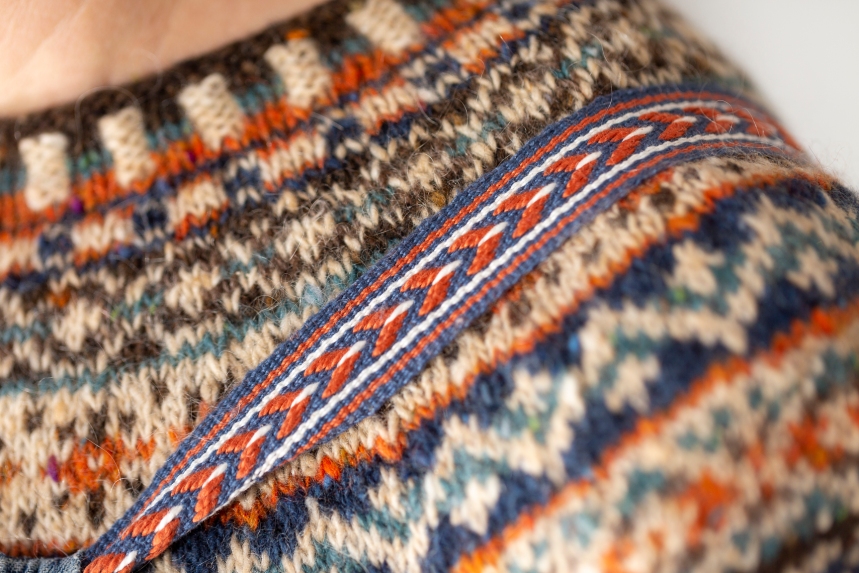
The creature asks these questions. It does not have the answers.

On to the overalls: an old, thrifted pair of dungarees, which I adapted to comfortably fit the dimensions of this particular creature, and accommodate my hand woven strap.

The denim, and the pin badges, are an homage to Pilar’s favourite jacket.

The creature likes the way that pin badges record incidental moments, particular events, new destinations. It enjoys pin badges as souvenirs, memorabilia, ephemera: wee everyday markers of place, inclination, friendship, personality.
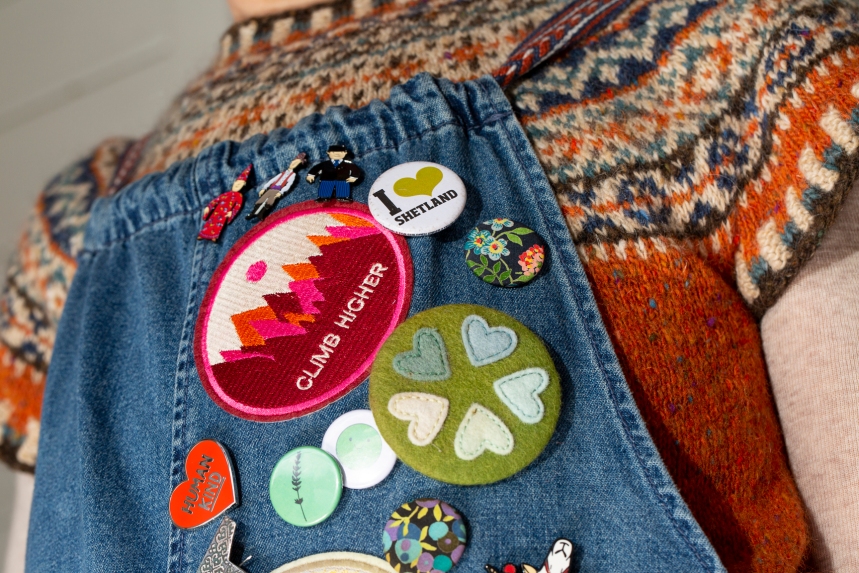
The creature likes Mr Benn. It loves to collect enamel pins from the knitting events and yarn festivals it visits. It is also a huge fan of talented badge and jewellery makers like Lorna Reid, Mike Finnie, and Felicity Ford (who created these wonderful tweed badges).
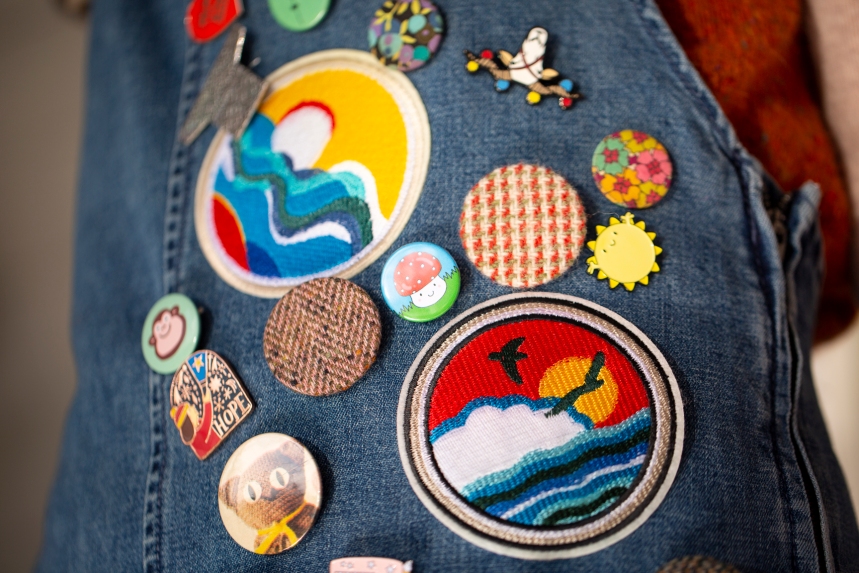
Some of the creature’s badges were gifts, while some were individually bought. Some remind the creature of being somewhere else (the wee horse came from a gallery in Philadelphia) while the Scottish agate brooch – a Victorian confection of polished, local stone – is definitely about just being here.
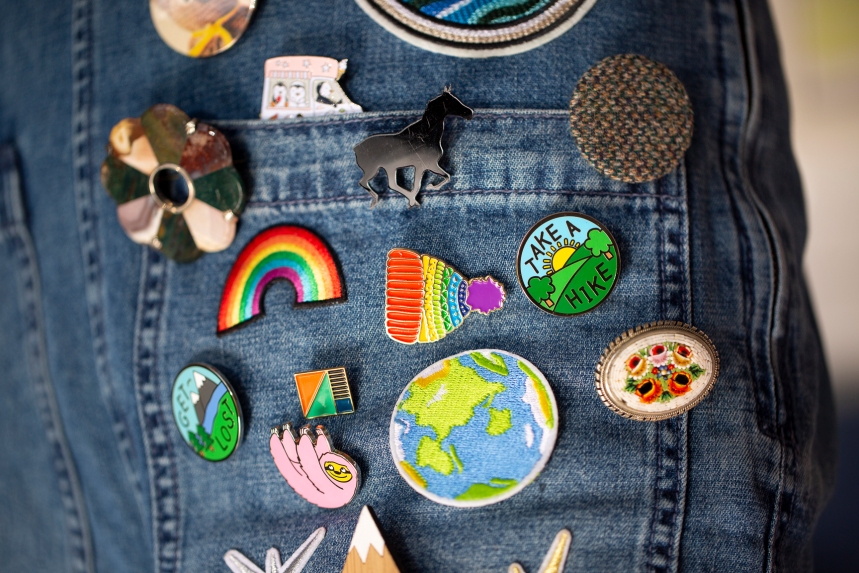
Mostly, the creature enjoys the colourful eclecticism of its badge collection, which befits the joyous syncretic spirit of its whole costume.

I hope that hearing about some of the thinking behind the creature’s making hasn’t dispelled its mystery. For those of you asking about the yoke sweater – yes, a pattern is now in the offing. And I’m also happy to say that the creature may be able to lend its woolly face to an exhibition. More about that shortly.



j’aime beaucoup le masque en laine feutrée et les belles couleurs
j’adore le pull y aura t il un modèle?
qu’elle énergie vous avez et vous nous transmettez!
LikeLike
I love the Burryman feel to this, and those antlers!
LikeLike
The OXO question — who “owns” the motif, does it originate in any one place, or is it somehow universal and connected to the materials different groups of humans use — is such a helpful way to frame the inquiry. Over the centuries artists from dominant cultures (Picasso and Whistler come immediately to mind) have made overt use of motifs and techniques from cultures not their own, but I haven’t seen the “borrowings” made in a way that presupposes equality of the contributing cultures as you do, Kate. Nor have I seen as much interest in the theme of shared or universal motifs. (I have been interested in the parallels in design between the stylized Japanese chrysanthemum and the “half-chrysanthemum” image of the scallop shell used in Christian pilgrimage, for example.) Your discussion of the components of your “creature” makes me all the more eager to see what Pilar has created. I hope that her difficult life circumstances won’t derail the creative process for her. It’s truly exciting to see craft as a catalyst for such a deep exploration/conversation.
LikeLiked by 2 people
Exactly! Many such motif “borrowings” are so obviously just that (the “Paisley” pattern springs immediately to mind) but as this project developed I became really interested in the question of how the limitations of woven or knitted textiles themselves create a kind of structural common language – articulated by different but equal contributing cultures, as you say.
I’m very much looking forward to Pilar’s corresponding representation in her creature once she’s finally home.
LikeLiked by 1 person
I think of Xs and Os as kisses and hugs.
LikeLiked by 1 person
This may be the best mask I have ever seen, seriously. The Antlers remind me of something I can’t quite pull to the surface yet…has to be primitive but cannot remember the culture, Yet!
LikeLike
Such a beautiful culmination of processes and practices – it’s been so wonderful to read about this collaboration, and the so many different, constituent activities. Designing, curating, weaving, felting, knitting, collecting… I think the creature is just amazing and such a powerful expression of so many things.
LikeLiked by 1 person
Stringbean (age 8) was mystified by The Creature this morning! Her first comment was “she’s silly,” but then she was intrigued by the felted shapes. Needle felting has not made it to this household yet…
Some of those patches and badges must have been collected for a long time! That means putting a lot of yourself into this project, in a different way to the usual.
LikeLike
ha ha – I AM silly! Silly is fun! Yes, some of these badges have been around a long time.
LikeLiked by 2 people
Silly is most excellent :)
LikeLike
Fun and powerful images.
Will there be or is there a pattern for the creatures jumper!
LikeLike
Seconding Becky’s request. Would love a kit offering in those very colors.
LikeLike
Such a fabulous creature, I’ve really loved the details, both the details in actuality, and also the working and reasoning involved – and then, hey!!! The agate brooch!!!! Is mine still here? Amazing that the creature has one, thank you 🙃
LikeLiked by 1 person
I’m a big fan of Mike Finnie too, and not just because he’s my cousin! I loved visiting him when we were children because he was always making something and he often gave me things he made.
LikeLiked by 1 person
Hugely inspirational and as thought/research provoking as ever 😍
LikeLiked by 1 person
I am just starting out with inkle weaving (I’m starting with card weaving) and admire your bands here, and the staying power needed to weave that length so beautifully. I had never really heard of an inkle loom before reading your blog, and it has taken this many months for me to think ‘I have to try this’. So for me, the journey is just beginning.
LikeLiked by 1 person
I find inkle weaving really relaxing – and generally quite different in its nature from knitting – though the pick-up bands do have a ‘just one more row’ feel to them! I am definitely still very much a learner, and fairly slow too – this band took me 4 days to weave.
LikeLike
You are so inspirational! Life has gotten in my way of my creativity, but I am starting to come out of the haze and you make me want to get out my inkle loom and my sewing machine again. Thank you so much. Will you post a pattern for the overalls? I love the idea of repurposing clothes I already own. You are a blessing in my life.
LikeLike
I absolutely love everything about the creature.
LikeLiked by 1 person
Really enjoyed reading this and the colours are a real moral boost too.
LikeLike